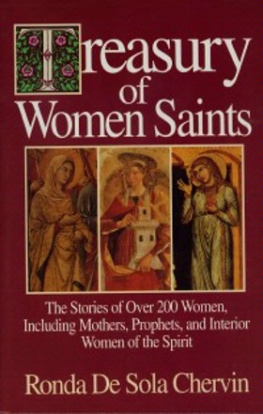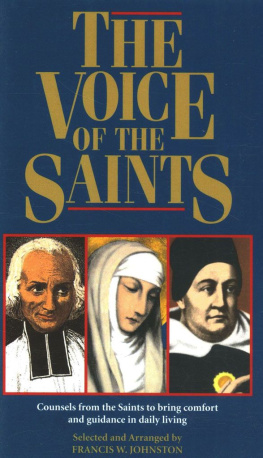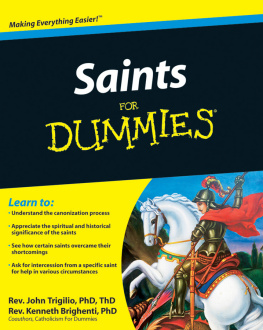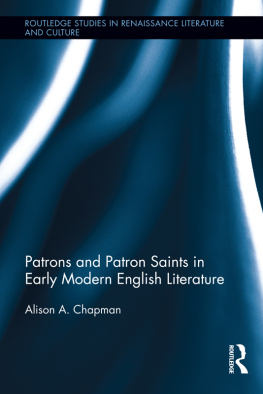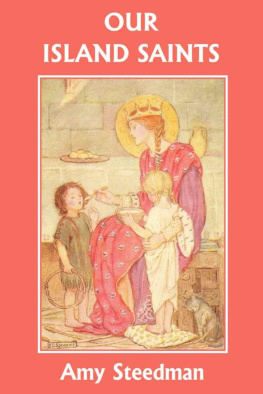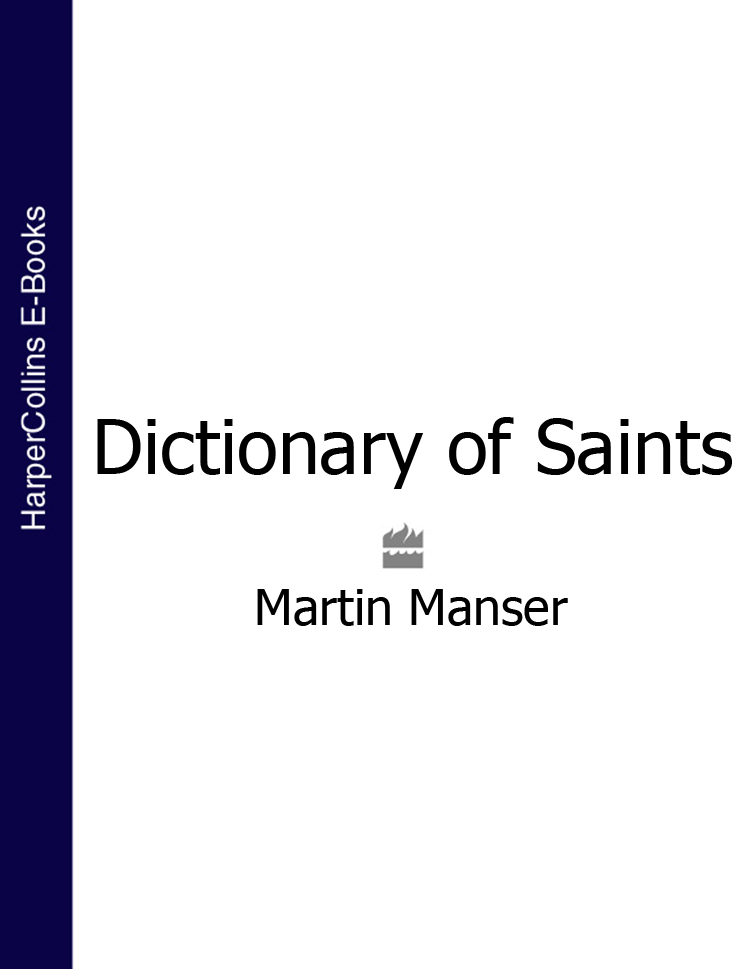C ONTENTS
In its broadest contemporary sense the word saint may describe any person whose nature or behaviour suggests exceptional holiness or goodness. More precisely, it may refer to any person deemed to have been granted admittance to heaven after their death on account of their virtuous life while on earth.
In biblical times, the term saint was interpreted somewhat differently, being understood to refer exclusively to those individuals within the early Christian community who had rejected sin and led lives in a state of sanctity. (According to the Bible itself, the term saint refers to holy people, that is, those who are consecrated to God; in New Testament terms, all followers of the Christian way.) In more general use, the term came to be applied especially to those martyrs who had died for their faith and who, being now in heaven, could represent before God the pleas of the faithful. As the Roman persecutions of early Christians came to an end the word saint began to be applied more widely to other notable religious figures who did not necessarily die martyrs deaths (technically, confessors), such as the Desert Fathers and other early monks and nuns. In later centuries the term saint gradually evolved until it came to include all manner of individuals deemed to have dedicated their lives to God and to be worthy of special respect, be they martyrs, hermits, theologians, popes, bishops, priests or humble lay people.
Estimates of the total number of saints acknowledged either locally or throughout the church vary but a figure of around 10,000 is often quoted. Of these only some 300 have actually been officially canonized by a pope. The vast majority of saints were originally acknowledged as such by popular acclaim rather than through any formal procedure, their shrines becoming sites of pilgrimage and their bones becoming treasured relics. Some became the focus of universal veneration, while many more were destined to remain the object of local cults. All might be petitioned in prayer for divine aid, protection or guidance.
The lives of some early saints became confused with one another and the details of many were forgotten entirely, or became shrouded in legend. Some lives, it would appear, were wholly fictitious, inspired by the discovery of an old grave, the product of local folklore or the mistranslation of an ancient written text. The need to formalize saint-making resulted in due course in the process of canonization (that is, the listing of saints in an official catalogue, or canon). The first such lists, chiefly martyrologies, were drawn up at an early date and today the identification of saints depends upon consultation of many such catalogues, including martyrologies and church calendars.
The first official canonization by a pope was that of St Ulrich in 993, under the aegis of Pope John XV, and by the 13th century it was accepted that the pope alone could officially confer sainthood (although this only usually happened after a local cult had become well established). In 1588 a special body within the Roman Catholic church was created specifically to investigate candidates for sainthood. From these investigations has evolved the modern (and often very lengthy) process of canonization, which involves detailed investigation into the life of a proposed saint. If initially successful, the individual concerned is granted the title Venerable, upon which he or she goes through further investigation before achieving beatification, being declared Blessed and assigned an official feast day (usually, though not always, falling on the day of their entry into heaven). After a final investigation the individual may be formally canonized as a saint (meaning he or she is deemed worthy of universal veneration). In the course of these investigations it must be proved that the individual in question lived a life of heroic service to virtue or piety, though they need not have been completely faultless. Other requirements include the validation of at least two posthumous miracles.
The Roman Catholic church and the Orthodox Eastern churches all have their own canonization procedures, with varying demands being made upon the evidence presented. The process of canonization was discontinued altogether in the Anglican and Protestant churches several centuries ago, but even here established saints are still respected and the term saint is used without reservation as, for instance, in the names of parish churches.
From time to time the church has altered the official standing of saints in response to doubts about the authenticity of their lives. A number of saints were removed from the official martyrology of the Roman Catholic Church with the publication of a revised Roman calendar in 1969, replacing that of 1584, and their importance was reduced (as was the case with the popular but largely legendary saints Christopher, Nicholas and Valentine). New saints have, however, been regularly added (especially under Pope John Paul II).
In the modern church the lives of the saints are often used as exemplars for the faithful to model their own lives upon. The saints have also retained their role as patrons, being commonly regarded as sources of divine protection and guidance. To this day thousands of children around the world are given the names of saints in the belief that this will ensure the special favour of the saint in question. The saints also have enormous cultural significance all round the world as a feature of national folklore and legend.
In selecting entries for this book the emphasis has been placed upon the more important and interesting saints in the canon. These include all the most familiar names, although space has also been made for some of the more obscure figures who, for instance, may be known today only through local placenames. Special attention has been given to the saints of Britain and Ireland.
Each entry includes birth and death dates (where known), details of the life, career and death of the saint in question, together with information about their achievements, character and significance. To these are added details of their patronage, emblems and feast day. It should be noted that feast days may vary widely, with different dates being given in different sources or in different churches. The Roman calendar is followed in this book (though even here there is considerable scope for variation). The main text is followed by a number of indexes listing feast days, emblems, patrons and locations in Britain and Ireland associated with saints.
Martin H. Manser
David H. Pickering
AchilleusSee NEREUS AND ACHILLEUS .
Adalbert of Magdeburg (d.981) German bishop. In 961 Adalbert, a monk of Trier, was selected to lead a band of Christian missionaries into Russia at the invitation of St Olga, princess of Kiev. The mission ended in disaster, however, when Olgas pagan son Svyatoslav attacked the group, killing several of them. Adalbert survived and returned to Germany, where he was appointed abbot of a monastery at Weissenburg. He promoted learning among the monks and went on to become archbishop of Magdeburg in 968. He remained in the post for 13 years, dedicating himself to the evangelization of the Wends.
Feast Day: 20 June.
Adalbert of Prague (c.956997) Bohemian bishop and martyr. Born Voytech into a noble family of Libice, Bohemia, he took the name Adalbert in homage to ADALBERT OF MAGDEBURG by whom he was educated. He rose to the rank of bishop of Prague before the age of 30 and devoted his energies towards the dissemination of Christianity through Bohemia and Hungary. Political opponents forced him into exile in 990, however, and he retreated to Rome and became a monk. Pope John XV ordered him back to Prague to renew his work. Supported by Duke Boleslas of Poland, he founded the Benedictine abbey of Brevnov, which he modelled upon the great monastery at Cluny, but once again fell foul of the local nobility and ended up back in Rome (995). Having given up all hope of making progress in Prague he spent his last years engaged in missionary work among the pagan Prussians in Pomerania with the assistance of his friend Emperor Otto III, only to be murdered as a suspected Polish spy in the vicinity of Konigsberg. He is honoured as the patron saint of Prussia and Poland.





